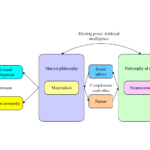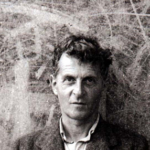Ricardo Miranda Nachmanowicz, Guest Lecturer at Graduate Program in Philosophy of Universidade Federal de Ouro Preto (UFOP) – Brazil. Resides in Gainesville, Fl, USA.
The paper Epistemology and autonomy in Hanslick’s concept of musical ideas, published in the journal Trans/form/ação, discusses Hanslick’s epistemological theory about musical autonomy. The defense of this principle, as we know, is the main reason why Hanslick wrote his essay, also known as his “positive thesis”, which consists, in a general sense, of an identification between the finality of music with attention in listening parameters in an unimodal way (auditory sensory modality).
In this sense, Hanslick’s real efforts are far from his “negative thesis,” although it is a more well-publicized subject. His “negative thesis” on how impossible or sometimes difficult it is for music to express semantic content or consistently express a specific feeling does not explain musical autonomy.
Thus, most of Hanslick’s argument was to dispute the perception categories of pure instrumental music appreciation and to show how these categories are related to specifically auditory mental activity, making the invention of musical autonomy possible. In philosophical terms, Hanslick undertook an epistemological analysis of the auditory perception related to music.
Unlike the widespread idealism of his life period, Hanslick addressed his investigations as an analytical approach to the listening experience, precisely the listening of classical instrumental concert music. European audiences have been constantly listening to classical repertoires for about a century, but how was it possible to listen to pure instrumental music? The answer provided by Hanslick was that composers had developed a strategy to maintain all the aesthetic interest in the audible field. We find the synthesis of this strategy, translated to an epistemological investigation, in the concept of “musical idea.”

Imagem: Wikimedia Commons.
A musical idea is what a musical piece provides: the structure that attracts the listener and the object described as beauty. To promote that kind of structure, the composer utilizes the motive cell and the tonal harmonic laws to make intricate forms for the listener. The composer, to do that – and here is where the analysis of Hanslick is more discerning – mobilizes a wide range of human faculties integrally. The practical and scientific knowledge of acoustical features, psycho-acoustical laws, and abstract mental formations of sound and musical objects are all elements of musical listening: an integrative comprehension of the human mind with a solid empirical basis.
In the book Logic and Music (Nachmanowicz, 2014), I have identified that Hanlisck’s objective-oriented aesthetics are directly opposed to Kant’s subjective-oriented aesthetics. Although both authors think about art or music in an epistemological manner, the guidelines of each project are not relatable. Hanlisck’s epistemology cannot be related to idealism.
So, what was the philosophical background of Hanslick’s epistemology? That question, an essential historical inquiry, became an investigation led by Alexander Wilfing (2023), who showed us that the scientific, objective, and empirical-oriented philosophy of Hanslick is related to the kind of positivism defended by Herbart’s philosophy.
About Ricardo Miranda Nachmanowicz
Ph.D in Contemporary Philosophy at Universidade Federal de Minas Gerais – UFMG. Post-Doctorate in Aesthetics at Universidade Federal de Ouro preto – UFOP.
References
BOURDIEU, P. Les règles de l’art. Genèse et structure du champ littéraire. Paris: Éditions du Seuil, 1998.
DAHLHAUS, C. Esthetics of Music. Trowbridge: Cambridge University Press, 1982.
HANSLICK, E. Vom Musikalisch-Schönen. Ein Beitrag zur Revision der Ästhetik der Tonkunst [online]. Leipzig: Druck und Verlag von Breitkopf & Härtel, 1922 [viewed 10 June 2024]. Available from: https://www.gutenberg.org/files/26949/26949-h/26949-h.htm.
NACHMANOWICZ, R. Lógica e música: conceitualidade musical a partir da filosofia de Kant e Hanslick. Belo Horizonte: Relicário, 2014.
TOMÁS, L. À procura da música sem sombra. Chabanon e a autonomia da música no século XVIII. São Paulo: Editora Unesp, 2011.
WILFING, A. Hanslick, Kant, and the Origins of Von Musikalisch-Schönen. Musicologica Austriaca: Journal for Austrian Music Studies, 2018 [viewed 10 June 2024]. Available from: https://www.musau.org/parts/neue-article-page/view/47
To read the article, access
NACHMANOWICZ, R.M. Epistemologia e autonomia no conceito de ideia musical de E. Hanslick. Trans/form/ação [online]. 2024, vol. 47, no. 3, e02400166 [viewed 10 June 2024]. https://doi.org/10.1590/0101-3173.2024.v47.n3.e02400166. Available from: https://www.scielo.br/j/trans/a/6rFwxGy5vt68mJmJYvzhMHx/
External links
Trans/Form/Ação – TRANS: https://www.scielo.br/trans/
Trans/Form/Ação – Journal: Instagram | Facebook | Academia.edu
Ricardo Miranda Nachmanowicz – ORCID: https://orcid.org/0000-0002-0807-5037
Como citar este post [ISO 690/2010]:



















Recent Comments